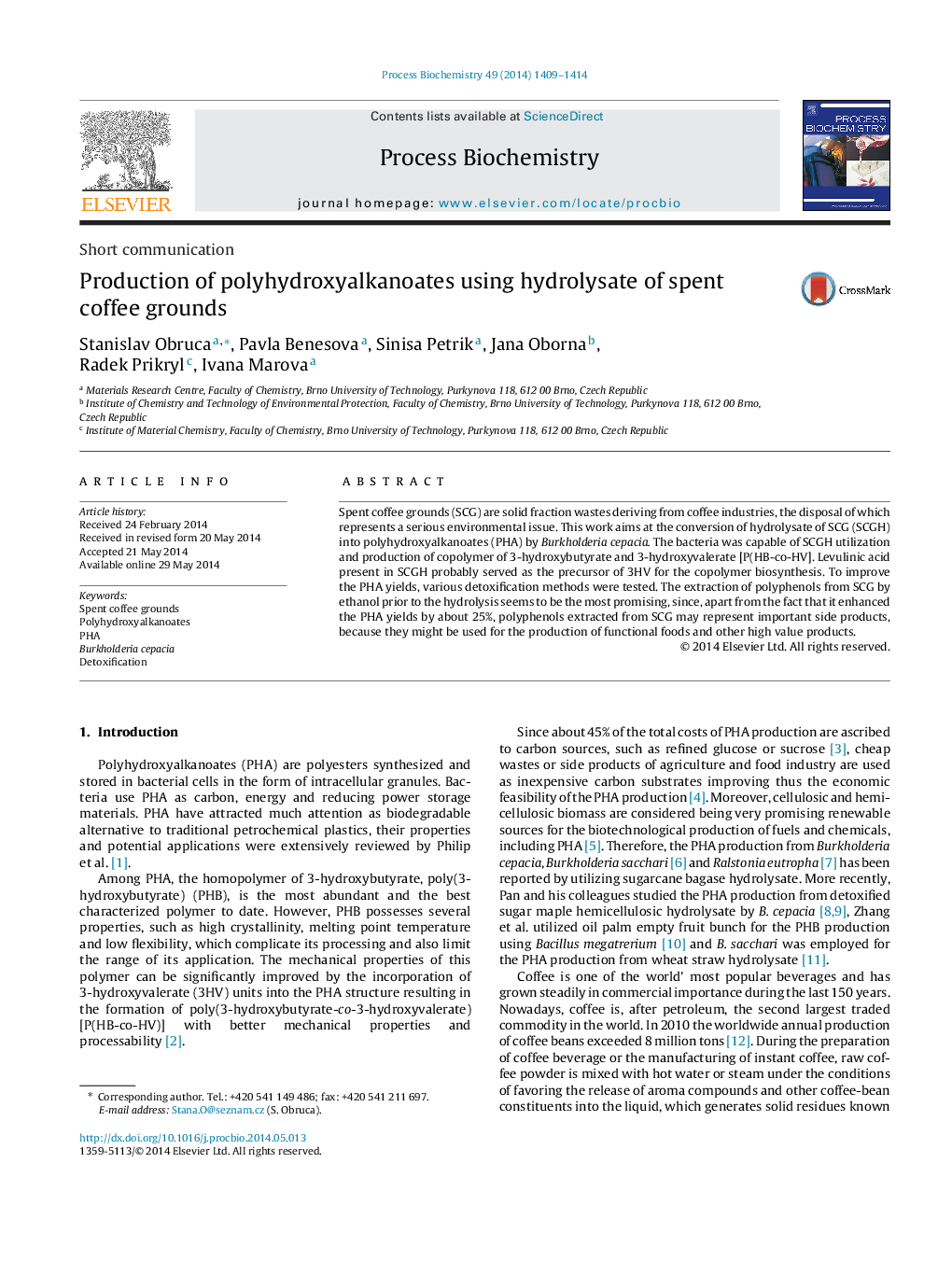| Article ID | Journal | Published Year | Pages | File Type |
|---|---|---|---|---|
| 34648 | Process Biochemistry | 2014 | 6 Pages |
•Hydrolysate of spent coffee grounds may be utilized for PHA production.•Burholderia cepacia is capable for P(HB-co-HV) copolymer biosynthesis.•Extraction of polyphenols prior to hydrolysis enhances PHA yields.
Spent coffee grounds (SCG) are solid fraction wastes deriving from coffee industries, the disposal of which represents a serious environmental issue. This work aims at the conversion of hydrolysate of SCG (SCGH) into polyhydroxyalkanoates (PHA) by Burkholderia cepacia. The bacteria was capable of SCGH utilization and production of copolymer of 3-hydroxybutyrate and 3-hydroxyvalerate [P(HB-co-HV]. Levulinic acid present in SCGH probably served as the precursor of 3HV for the copolymer biosynthesis. To improve the PHA yields, various detoxification methods were tested. The extraction of polyphenols from SCG by ethanol prior to the hydrolysis seems to be the most promising, since, apart from the fact that it enhanced the PHA yields by about 25%, polyphenols extracted from SCG may represent important side products, because they might be used for the production of functional foods and other high value products.
